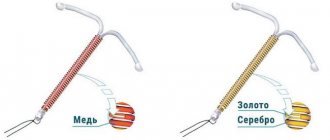Rehabilitation after surgery
A caesarean section is performed under general anesthesia. The woman is cut into the upper wall of the abdomen and the anterior sphere of the uterus. After surgery, the woman’s body spends all its strength on restoring and healing the incisions. Therefore, the onset of menstruation may occur a little later than expected.
The remaining processes are restored, as during normal childbirth. The body develops and returns to the normal hormonal levels that were observed in girls before conception. The uterus gradually contracts and restores its previous shape. But you need to know that if a girl is breastfeeding, menstruation will most likely begin six months or even a year after the birth of the child. This also applies to caesarean sections.
The body begins to change immediately after the baby is born. The uterus shrinks and the wound bleeds heavily. When the uterus heals, the woman sees a strong red discharge. They last six to eight weeks after the birth of the baby, and over time, the image of the discharge begins to change little by little. In the first days, the discharge is red, has an unpleasant odor and is of large volume, and over time it becomes more brown in color, with clots in small quantities.
Due to the fact that the woman gave birth by cesarean, her strong and profuse discharge may last a little longer than usual. In order for recovery to occur much earlier, you should follow some recommendations:
- Go to the toilet more often and empty your bladder. It shouldn't be too full. The duration of bleeding and how quickly the suture heals after surgery depends on this;
- follow simple hygiene rules. Wash regularly and well, use sanitary pads and change them more often;
- putting the baby to the breast more often, this causes the uterus to contract.
But, as a rule, strong secretion after childbirth is not menstruation, but preparation for a normal lifestyle. When they end, this means that the girl’s body gradually becomes the same as it was before pregnancy.
Normal discharge
What should the first menstruation be like after a cesarean section? The appearance of the first menstruation can be considered normal either a month after childbirth or several years later. The timing of their occurrence will directly depend on:
- Is the baby being fed breast milk? The longer the breaks between milk feedings, the sooner menstruation will normalize.
- Regularity of normal menstruation. If before pregnancy a woman had regular irregularities in the menstrual cycle, then they can continue after the birth of the baby.
In normal conditions, periods after a cesarean section should be almost the same as before pregnancy. Some women even note that after pregnancy their cycles became better, the level of pain decreased and the amount of discharge decreased.
In some cases, the opposite happens: severe pain occurs, unpleasant clots are observed, and blood loss increases significantly. This can be considered normal only in the first months of the recovery period. If negative symptoms continue for a long time, this may indicate the presence of a pathological process in the body. In this case, it is important to consult a doctor in time and determine the cause of the lesion.
What can affect the critical days after cesarean section?
The first menstruation is affected by many different circumstances, such as:
- When your period begins depends on your age. The younger she is, the earlier her period will come. For women after thirty, these days come later;
- from how all nine months of pregnancy go. If throughout the entire pregnancy there were no complications and no abnormalities, then uterine contractions will proceed faster;
- way of life, a young mother, as well as nutrition and exercise. If you maintain balance in everything, then it will very quickly return to its previous form;
- lactation. This is one of the important points that we have already told you about. At this point, the body produces prolactin, which directly ensures the production of breast milk. The hormone affects the functioning of the ovaries, making them sluggish. If your baby breastfeeds frequently, there is less chance of menstruation. Therefore, four to six months after a cesarean section, you can already expect your critical days. And if a girl does not breastfeed, these days will come in one month or two months.
The process of contraction of the uterus
If you breastfeed regularly, a woman may begin her period several months after giving birth. In this case, the timing of the appearance of menstrual flow will be completely individual.
The fact is that when the baby is attached, the nipple is irritated, which provokes a reflex contraction of the uterus. It is at this time that a woman may feel unpleasant pain in the lower abdomen. The same sensations are typical during menstruation, since during menstruation, sensitivity increases significantly, and the uterus regularly contracts to cleanse its cavity.
If a woman experiences pain due to contractions in the uterus, then there is no need to worry, since such a process does not indicate the presence of pathologies. Pain during menstruation will go away immediately after breastfeeding ends.
What are your periods like after surgery?
What kind of menstruation will happen after childbirth, namely after a cesarean section, interests any woman. They very often ask gynecologists this question. The appearance of menstruation can disrupt the healing of wounds and also cause inflammatory processes.
The first critical days after childbirth always have a lot of discharge. They last for the first few months. This duration of critical days is considered normal if there are no other symptoms. For example, deterioration in health or various other unpleasant symptoms. Every woman's body reacts to hormones differently. Therefore, the nature of the discharge will be different for everyone. When the discharge is very heavy and lasts longer than expected, you need to see a gynecologist. When periods are strong enough, this may be the beginning of hyperplasia or another disease.
The first thirty days of menstruation occur without the maturation of the egg, due to the fact that the body is weakened and has not yet had time to recover. When new periods begin, the ovaries will begin to work at full strength, and the hormonal balance will almost approach normal. Therefore, you need to wait until ovulation occurs.
After a cesarean section, the cycle may not be constant for three to four months. After this time, it improves and becomes the same as it was before pregnancy. But you should see what the interval between critical days will be. It should not be less than twenty-one days, and no more than thirty-five days. And the duration is no less than three days and no more than a week. If deviations from the norm are observed, you should consult your doctor.
When does your period start?
It is impossible to say exactly when menstruation will occur after pregnancy, since this will directly depend on the individual characteristics of the woman’s body. The timing in this case may vary.
After a cesarean section, when the baby comes out and labor is completed, the woman’s body enters the rehabilitation stage. The uterus begins to shrink in size and takes on a normal shape. Every day it drops one centimeter. The rehabilitation process can last up to 8 weeks. Sometimes the uterus becomes even smaller than before birth. This can happen after intensive breastfeeding of a newborn.
What should not happen after surgery
There are several symptoms of bad periods, after which you need to go to the hospital:
- abrupt cessation of discharge before the right time. Almost always in these cases, there is a bend of the uterus, with which the secretions do not reach the surface. This creates endometritis;
- minor periods. This phenomenon may be due to poor uterine contractions. Secretion stagnates in it, and as a result various inflammatory processes appear;
- not a constant cycle six months after surgery. This can also develop into a serious problem. It is considered normal if after childbirth, the cycle, on the contrary, improves and there is practically no pain during menstrual periods;
- heavy periods after surgery for several months indicate possible diseases and require special treatment. After a cesarean section, a scar remains on the organ, which prevents the uterus from contracting correctly. If a woman uses more than one pad in an hour, then she should go to the hospital;
- a bad, pungent aroma of menstruation appears if there is a severe or even purulent infection in the genitals. This may be due to endometritis. Also, during this disease, there may be an increased temperature and discomfort in the abdomen. This disease is usually observed after cesarean section;
- The discharge is very smeared, before or after menstruation. Under normal conditions, this should not happen;
- when the discharge resembles a mass similar to cottage cheese and is accompanied by itching, these are signs of thrush. When a girl takes antibiotics after surgery, this phenomenon appears and is considered very dangerous;
- Frequent periods for three cycles. When the first period occurs once every 14-20 days, this is considered normal. But when this continues in subsequent cycles, then you should start to worry and consult a doctor.
When to see a doctor?
Sometimes after the birth of a child, a woman’s menstrual cycle immediately normalizes and becomes regular. In this case, periods appear at the right time and proceed without much pain with normal discharge.
But in some situations, a woman should not delay and immediately go to see a doctor:
Rupture or injury
During the birth process, a woman often experiences serious tears, sprains of muscles and ligaments. After stitching the damaged areas, a woman’s body can react completely differently to the sutures. As a result of this procedure, stenosis and severe scars may appear in the vagina, which lead to pain during sexual intercourse and menstrual flow.
In some cases, after a cesarean section, cervical canal stenosis may occur due to uterine rupture. During an ultrasound examination and external examination, such a violation will not be very noticeable.
A narrowed cervical canal during menstruation will lead to accumulation of menstruation, which will put pressure on the walls of the uterus, leading to acute pain. Painful symptoms will increase as the volume of blood coming out increases, in some cases it becomes unbearable. This condition requires urgent treatment.
Another sign of cervical canal stenosis is prolonged discharge of dark clots after menstruation. Pain in this condition does not always appear immediately in the first menstruation; most often, the disorder is diagnosed a year after the operation.
Presence of endometriosis
Endometriosis is a disease that is widespread in gynecological practice. This condition often leads to pain during menstruation. Birth processes can trigger the appearance of such a disease and cause its progression. The disease is especially dangerous during a cesarean section.
Endometriosis pain almost always goes away against the background of menstrual flow; it begins at the beginning of menstruation and continues throughout its duration. A sign of pain due to endometriosis is heavy spotting of blood before and after your period. Pain sensations can come from the lower abdomen, sometimes present in the perineum. In the latter case, the woman constantly feels discomfort when putting stress on this area (riding a bicycle, sitting on a chair).
To treat endometriosis, complex therapy is used - surgery and hormonal medications.











